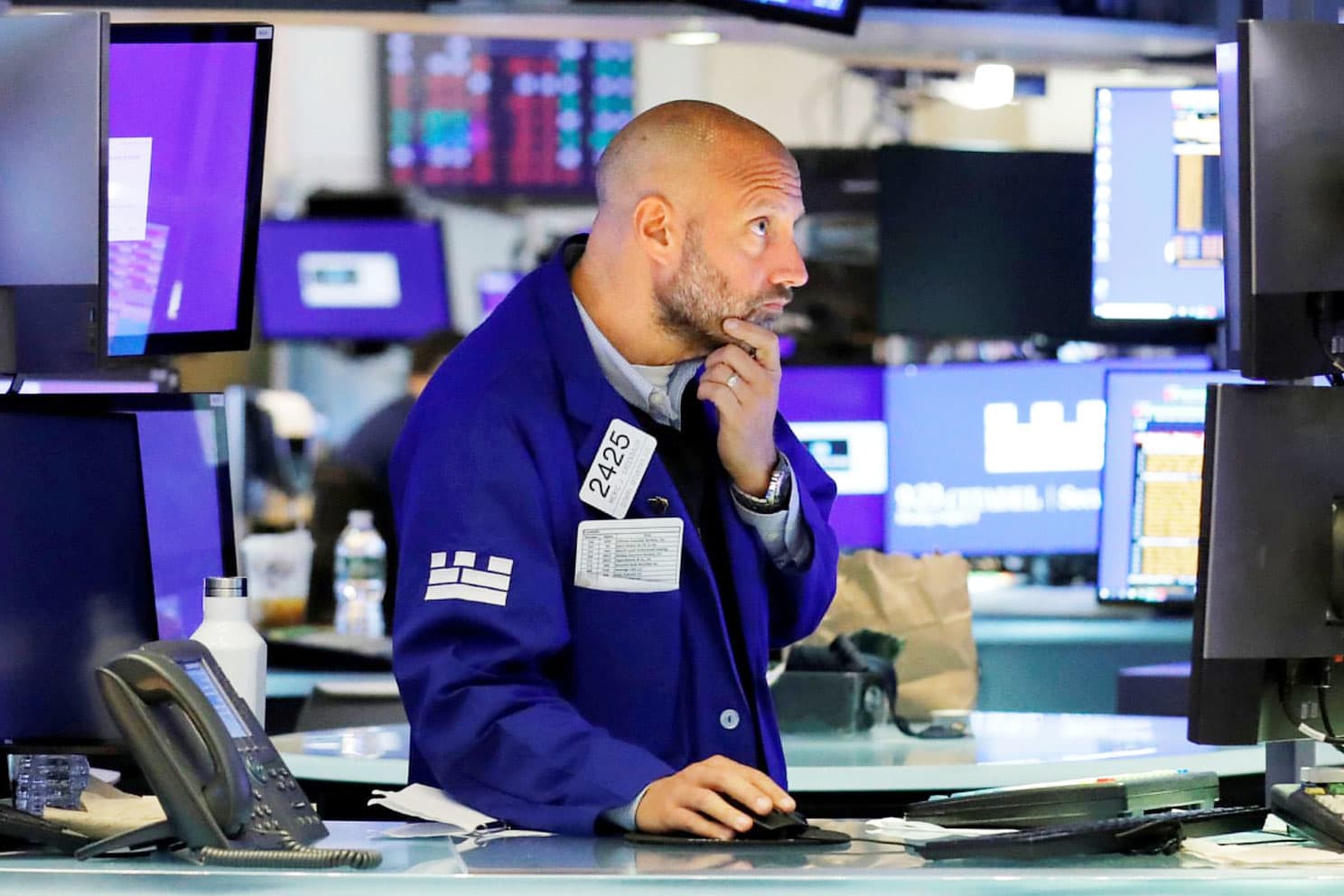Dow rises 200 points as 10-year yield retakes key 1.5% level, tech shares weigh on broader market

U.S. stocks were split on Monday morning as traders braced for the final week of a volatile September and Treasury yields rose.
The S&P 500 fell by 0.2% and the Nasdaq Composite shed nearly 2% as tech stocks showed weakness in early trading. The Dow Jones Industrial Average rose more than 200 points as energy stocks and bank shares pushed higher.
The divergence for the major averages came as Treasury yields pushed higher. The 10-year Treasury yield increased on economic optimism and inflation fears, briefly topping 1.5% on Monday. That’s the highest since June and up from 1.30% at the end of August.
“We believe that these [bond market] moves have provided the spark for another ‘Value Rip’ across equity markets. In our view, the direction of longer-term interest rates should remain the #1 driver of market returns, sector rotation & thematic performance in the weeks ahead,” Chris Senyek of Wolfe Research said in a note to clients.
Alphabet, Apple and Nvidia were lower in early trading, weighing the S&P 500 and Nasdaq. Tech stocks are seen as sensitive to rising interest rates because higher debt costs can make long-term growth less attractive to investors.
Also weighing on sentiment was a potential government shutdown to end the week.
Stocks linked to the economic comeback led the early gains as U.S. Covid cases continued to roll over.
U.S. cases averaged about 120,000 per day over the last week, according to data compiled by Johns Hopkins University, down from a 7-day average of more than 166,000 cases at the peak of this latest wave in early September. Pfizer CEO Albert Bourla said on Sunday that he thought the U.S. could return to normal “within a year” though annual vaccinations might be needed.
Carnival Corp rose 6% and United Airlines added 2.9% in early trading. Shares of Boeing jumped 2.7%.
The rise in yields appeared to boost financial stocks on Monday, with the KBW Bank Index climbing 2.4%.Shares of Goldman Sachs and JPMorgan Chase rose more than 2%, making them some of the best performers in the Dow.
Exxon Mobil and Occidental Petroleum led gains in the energy sector as WTI crude continued its September run, topping $74 a barrel.
Additionally, the August reading for durable goods orders came in well above expectations on Monday, powered in large part by a jump for the transport sector.
Government shutdown?
Investors are monitoring the progress in Washington as lawmakers try to prevent a government shutdown, a default on U.S. debt and the possible collapse of President Joe Biden’s sweeping economic agenda.
House Speaker Nancy Pelosi said Sunday that she expects the $1 trillion bipartisan infrastructure bill to pass this week, but voting on the legislation may be pushed back from its original Monday timeline.
Congress must pass a new budget by the end of September to avoid a shutdown, and lawmakers must also figure out a way to increase or suspend the debt ceiling in October before the U.S. would default on its debt for the first time.
“DC will start garnering more attention in the coming weeks as the political calculus around passing infrastructure bills and the debt ceiling debate likely guarantees some market moving headlines,” wrote Tavis McCourt, institutional equity strategist at Raymond James.
Wall Street is coming off a roller-coaster week amid a slew of concerns from the debt crisis of China’s real estate giant Evergrande, to the Federal Reserve’s signal on rollback in monetary stimulus, and to Beijing’s crackdown on cryptocurrencies. Still, major averages managed to wipe out steep losses earlier in the week and eke out small gains.
The blue-chip Dow finished the week 0.6% higher, breaking a three-week losing streak. The S&P 500 rose 0.5% on the week, while the tech-heavy Nasdaq Composite edged up 0.02% last week.
“The market recovery indicated that the buy-the-dip mentality remains,” Mark Hackett, chief of investment research at Nationwide, said in a note.
So far, September is living up to its reputation for volatility and weakness as major averages have all registered modest losses. Entering Monday, the S&P 500 was off by 1.5%, on track to post its first negative month since January. The broad equity benchmark is about 2% off its record high from Sept. 2. The Dow was down 1.6% for the month, while the Nasdaq had slipped 1.4%.
But overall, investors continue to buy the dip for stocks. The S&P 500 fell as much as 4% from its record during the month before turning around. Friday was 224 trading days since the last 5% pullback, the 8th longest streak since 1930, according to Goldman Sachs.
“We continue to exercise caution in the near term, especially as we enter the seasonally weakest part of the year (late September — mid-October),” Larry Adam, CIO at Raymond James, said in a note. “However, given continued robust economic growth, our bias is to hold existing equity exposure or add opportunistically on weakness.”
Elsewhere, bitcoin rebounded about 2% to $43,454 after dropping 5% on Friday. The sell-off came after China’s central bank declared all cryptocurrency-related activities illegal.




